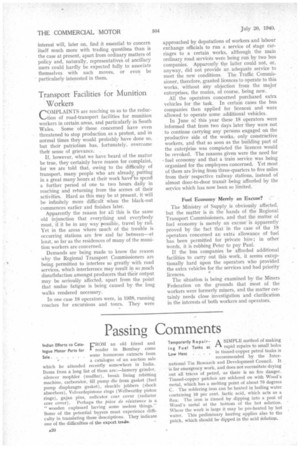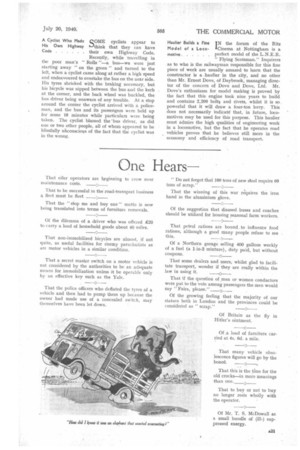Passing Comments
Page 22

Page 23

If you've noticed an error in this article please click here to report it so we can fix it.
Indian Efforts to CataCROM an old friend and logue Motor Parts for 1 reader in Bombay come
Sale some . humorous extracts from
• a catalogue of an auction sale which he attended recently somewhere in India. Items from a long list of these are:—hemery grinder, silencer mophler (muffler), break lining rebitting machine, carborator, fill pump die from gasket (fuel pump diaphragm gasket), shuckle jobbers (shock absorbers), Velverdepistone rings (Wellworthy piston rings), gajan pins, redicator coar cover (radiator core cover). Perhaps the piece de risistance is a " wooden cupboard having some useless things." Some of the potential buyers must experience difficulty in translating these descriptions. They indicate one of the difficulties of the export ixade Temporarily RepairA SIMPLE method of making ing Fuel Tanks at 1-1, rapid repairs to small holes
Low Heat . . . in tinned-copper petrol tanks is recommended by the International Tin Research and Development Council. It is for emergency work, and does not necessitate drying out all traces of petrol, as there is no fire danger. Tinned-copper patches are soldered on with Wood's metal, which has a melting point of about 70 degrees C. The soldering iron can be heated in boiling water containing 10 per cent. facile acid, which acts as a flux. The iron is tinned by dipping into a pool of Wood's metal at the bottom of the hot solution. Where the work is large it may be pre-heated by hot water. This preliminary heating applies also to the patch, which should be dipped in the acid golution.
A Cyclist Who Made QOME cyclists appear to His Own Highway 1,-/think that they can have
Code their own Highway Code.
Recently, while travelling in the poor man's " Rolls "—a bus—we were just starting away "on the green" and turned to the left, when a cyclist came along at rather a high speed and endeavoured to overtake the bus on the near side. His tyres shrieked with the braking necessary, but his bicycle was nipped between the bus and the kerb at the corner, and the back wheel was buckled, the bus driver being unaware of any trouble. At a stop around the corner the cyclist arrived with a policeman, and the bus and its passengers were held up for some 10 minutes while particulars were being taken. The cyclist blamed the 'bus driver, as did one or two other people, all of whom appeared to be blissfully uhconscions of the fact that the cyclist was in the wrong.
Haulier Builds a Fine IN the forum of the Ritz Model of a Loco'Cinema at Nottingham is a
motive perfect model of the L.N.E.R.
" Flying Scotsman." Inquirers as to who is the railwayman responsible for this fine piece of work are usually amazed to learn that the constructor is a .haulier in the city, and no other than Mr. Ernest Dove, of Daybrook, managing director of the concern of Dove and Dove, Ltd. Mr. Dove's enthusiasm for model making is proved by the fact that this engine took nine years to build and contains 2,200 bolts and rivets, whilst it is so. powerful that it will draw a four-ton lorry. This does not necessarily indicatd that, in future, locomotives may be used for this purpose. This haulier must admire the high qualities of engineering work in a locomotive, but the fact that he operates road vehicles proves that he believes still more in the economy and efficiency of road transport.




























































